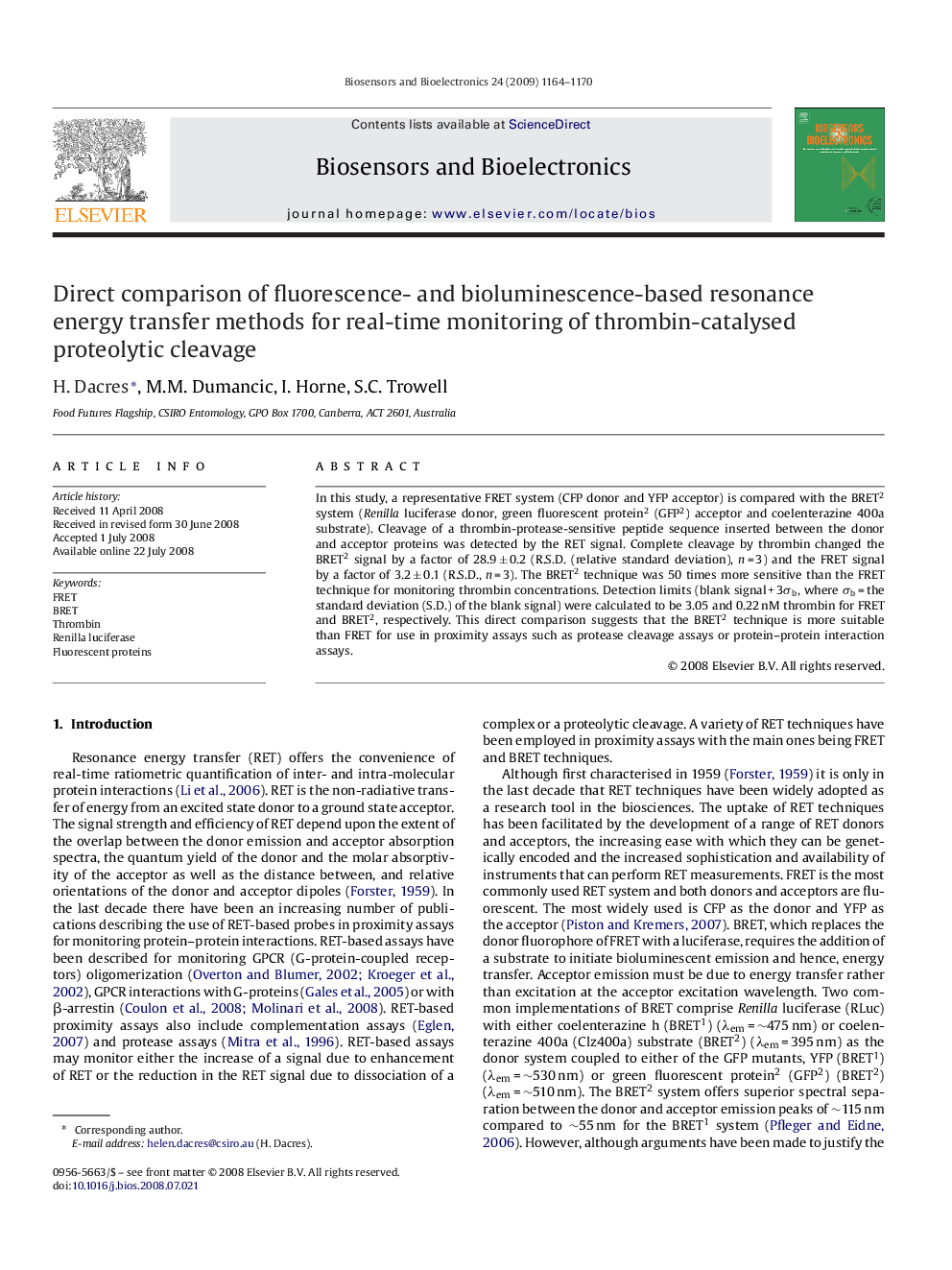| Article ID | Journal | Published Year | Pages | File Type |
|---|---|---|---|---|
| 868847 | Biosensors and Bioelectronics | 2009 | 7 Pages |
In this study, a representative FRET system (CFP donor and YFP acceptor) is compared with the BRET2 system (Renilla luciferase donor, green fluorescent protein2 (GFP2) acceptor and coelenterazine 400a substrate). Cleavage of a thrombin-protease-sensitive peptide sequence inserted between the donor and acceptor proteins was detected by the RET signal. Complete cleavage by thrombin changed the BRET2 signal by a factor of 28.9 ± 0.2 (R.S.D. (relative standard deviation), n = 3) and the FRET signal by a factor of 3.2 ± 0.1 (R.S.D., n = 3). The BRET2 technique was 50 times more sensitive than the FRET technique for monitoring thrombin concentrations. Detection limits (blank signal + 3σb, where σb = the standard deviation (S.D.) of the blank signal) were calculated to be 3.05 and 0.22 nM thrombin for FRET and BRET2, respectively. This direct comparison suggests that the BRET2 technique is more suitable than FRET for use in proximity assays such as protease cleavage assays or protein–protein interaction assays.
